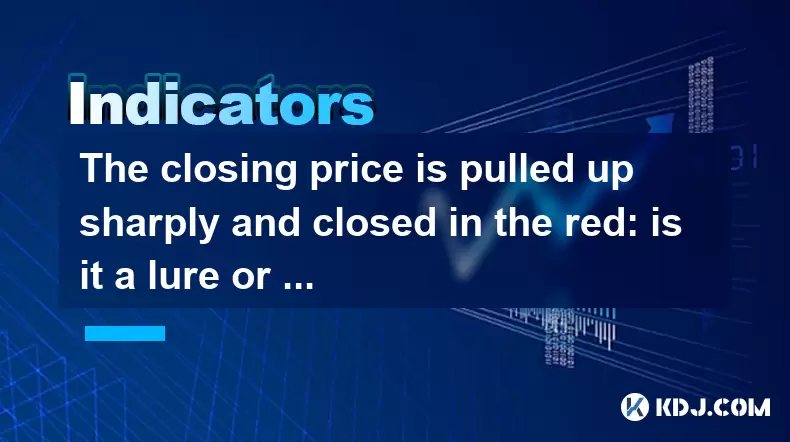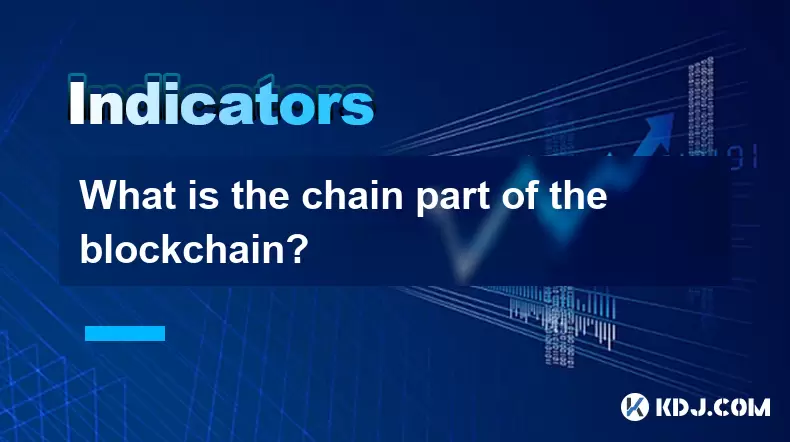-
 Bitcoin
Bitcoin $115000
0.12% -
 Ethereum
Ethereum $3701
4.50% -
 XRP
XRP $3.081
2.99% -
 Tether USDt
Tether USDt $0.0000
-0.01% -
 BNB
BNB $767.9
1.45% -
 Solana
Solana $169.5
3.13% -
 USDC
USDC $0.9999
0.01% -
 Dogecoin
Dogecoin $0.2106
4.30% -
 TRON
TRON $0.3334
1.62% -
 Cardano
Cardano $0.7564
2.54% -
 Stellar
Stellar $0.4165
0.76% -
 Hyperliquid
Hyperliquid $38.75
0.25% -
 Sui
Sui $3.593
3.00% -
 Chainlink
Chainlink $17.08
3.59% -
 Bitcoin Cash
Bitcoin Cash $573.6
4.35% -
 Hedera
Hedera $0.2508
-0.84% -
 Avalanche
Avalanche $23.07
6.46% -
 Ethena USDe
Ethena USDe $1.001
-0.02% -
 Litecoin
Litecoin $120.8
8.17% -
 UNUS SED LEO
UNUS SED LEO $8.943
-0.32% -
 Toncoin
Toncoin $3.400
-5.60% -
 Shiba Inu
Shiba Inu $0.00001255
1.54% -
 Uniswap
Uniswap $9.908
6.32% -
 Polkadot
Polkadot $3.718
2.10% -
 Monero
Monero $303.0
-0.74% -
 Dai
Dai $0.9999
-0.02% -
 Bitget Token
Bitget Token $4.392
0.91% -
 Cronos
Cronos $0.1403
6.31% -
 Pepe
Pepe $0.00001076
1.13% -
 Aave
Aave $267.2
1.80%
The closing price is pulled up sharply and closed in the red: is it a lure or a grab?
Sharp pull-ups followed by red closings in crypto can be lures by manipulators or grabs for undervalued assets; traders must analyze volume and trends to decide.
Jun 14, 2025 at 01:14 pm

In the world of cryptocurrency, market dynamics can often lead to unexpected price movements that leave traders and investors puzzled. One such scenario is when the closing price of a cryptocurrency is pulled up sharply but ultimately closes in the red. This situation raises the question: is it a lure designed to trap unsuspecting traders, or is it an opportunity to grab a potentially undervalued asset? To understand this phenomenon, we need to delve into the mechanics of price manipulation, market psychology, and trading strategies.
Understanding Sharp Pull-ups and Red Closings
A sharp pull-up in the closing price refers to a sudden increase in the price of a cryptocurrency towards the end of a trading period. This can happen within minutes or even seconds before the market closes. However, if the price then falls back and closes below the opening price, it results in a red closing. This situation can be confusing because it appears as though the market was on the verge of a bullish close but failed to sustain the momentum.
The sharp pull-up can be driven by various factors, including large buy orders placed by whales or algorithmic trading systems. On the other hand, the red closing might be due to profit-taking, stop-loss triggers, or a lack of sustained buying interest. Understanding these dynamics is crucial for traders trying to decipher whether such a move is a lure or a grab.
The Role of Market Manipulation
Market manipulation is a significant concern in the cryptocurrency space. Manipulators often use tactics like pump-and-dump schemes to artificially inflate the price of a cryptocurrency before selling it off at a profit. A sharp pull-up followed by a red closing could be indicative of such manipulation. In this scenario, the pull-up serves as a lure to attract more buyers, only for the manipulators to sell their holdings at the peak, causing the price to plummet.
To identify potential manipulation, traders should look for unusual trading volumes and price movements that do not align with broader market trends. Additionally, social media sentiment and news events can provide clues about whether a sharp pull-up is genuine or orchestrated.
Market Psychology and Trading Strategies
Market psychology plays a pivotal role in how traders react to sharp pull-ups and red closings. Fear of missing out (FOMO) can drive traders to buy into the pull-up, hoping to capitalize on a potential breakout. Conversely, fear of loss might prompt others to sell as soon as the price starts to decline, contributing to the red closing.
Traders can use various strategies to navigate such scenarios. One approach is scalping, where traders aim to profit from small price movements by buying during the pull-up and selling before the red closing. Another strategy is swing trading, where traders hold positions for a few days to capitalize on larger price swings.
Technical Analysis and Indicators
Technical analysis can provide valuable insights into whether a sharp pull-up followed by a red closing is a lure or a grab. Candlestick patterns, such as doji or shooting stars, can signal potential reversals or continuations. Moving averages and relative strength index (RSI) can help traders gauge momentum and overbought/oversold conditions.
For instance, if the RSI indicates an overbought condition during the pull-up, it might suggest that the price is due for a correction, supporting the idea of a lure. Conversely, if the moving averages show a bullish trend despite the red closing, it could indicate a potential grab opportunity.
Case Studies and Real-World Examples
Examining real-world examples can provide further clarity on whether a sharp pull-up followed by a red closing is a lure or a grab. Consider a scenario where Bitcoin experiences a sharp pull-up in the last few minutes of trading but closes in the red. If this occurs amidst a broader bullish trend and strong fundamentals, it might be a buying opportunity (grab). However, if the pull-up coincides with suspicious trading volumes and negative sentiment, it could be a trap (lure).
Another example might involve altcoins with low liquidity. A sharp pull-up in these assets could be more susceptible to manipulation, making it more likely to be a lure. Traders should always conduct thorough research and consider the context before making trading decisions based on such price movements.
Risk Management and Decision-Making
Effective risk management is essential when dealing with sharp pull-ups and red closings. Setting stop-loss orders can help traders limit potential losses if the price continues to decline after a red closing. Position sizing and diversification can also mitigate risk by ensuring that no single trade has a disproportionate impact on the overall portfolio.
When deciding whether to treat a sharp pull-up followed by a red closing as a lure or a grab, traders should consider their risk tolerance, trading goals, and the broader market context. Backtesting trading strategies on historical data can provide insights into how different approaches might perform in similar scenarios.
Frequently Asked Questions
Q: How can I differentiate between a genuine price movement and a manipulated one during a sharp pull-up and red closing?
A: To differentiate between genuine and manipulated price movements, look for unusual trading volumes, patterns that do not align with broader market trends, and analyze social media sentiment and news events. Genuine movements are typically supported by fundamental factors and broader market trends, while manipulated ones often show signs of artificial inflation and sudden sell-offs.
Q: What are some common indicators that traders use to predict whether a sharp pull-up will result in a red closing?
A: Common indicators include candlestick patterns like doji or shooting stars, moving averages to gauge trend direction, and the relative strength index (RSI) to identify overbought or oversold conditions. These indicators can help traders anticipate potential reversals or continuations following a sharp pull-up.
Q: Can sharp pull-ups and red closings be used as part of a long-term investment strategy, or are they more suited to short-term trading?
A: Sharp pull-ups and red closings are generally more suited to short-term trading strategies like scalping or swing trading, where traders aim to capitalize on immediate price movements. Long-term investors typically focus on broader market trends and fundamental analysis rather than short-term price fluctuations.
Q: How does the liquidity of a cryptocurrency affect the impact of sharp pull-ups and red closings?
A: The liquidity of a cryptocurrency significantly affects the impact of sharp pull-ups and red closings. In cryptocurrencies with low liquidity, sharp pull-ups are more susceptible to manipulation, and the subsequent red closings can be more pronounced due to the ease of influencing price with smaller trading volumes. In highly liquid markets, such movements are less likely to be manipulated and may reflect genuine market dynamics.
Disclaimer:info@kdj.com
The information provided is not trading advice. kdj.com does not assume any responsibility for any investments made based on the information provided in this article. Cryptocurrencies are highly volatile and it is highly recommended that you invest with caution after thorough research!
If you believe that the content used on this website infringes your copyright, please contact us immediately (info@kdj.com) and we will delete it promptly.
- Velo Universe, DEX, and DeFi Security: Navigating the Future of Decentralized Trading
- 2025-08-05 09:25:13
- Bitget Wallet Revolutionizes Solana with Gas-Free Transactions: A New Era for DeFi
- 2025-08-05 09:25:13
- Ozak AI, Crypto Boom, and ROI Potential: Is This the Next Big Thing?
- 2025-08-05 09:25:24
- Solana's ETF Hopes & the All-Time High Chase: Is SOL Set to Soar?
- 2025-08-05 09:25:24
- Coinbase's Brian Armstrong and the Art of Focused Work: A Deep Dive
- 2025-08-05 09:25:30
- Uniswap Price Prediction: Bullish Reversal on the Horizon?
- 2025-08-05 09:25:30
Related knowledge

What is a nonce and how is it used in Proof of Work?
Aug 04,2025 at 11:50pm
Understanding the Concept of a Nonce in CryptographyA nonce is a number used only once in cryptographic communication. The term 'nonce' is derived fro...

What is a light client in blockchain?
Aug 03,2025 at 10:21am
Understanding the Role of a Light Client in Blockchain NetworksA light client in blockchain refers to a type of node that interacts with the blockchai...

Is it possible to alter or remove data from a blockchain?
Aug 02,2025 at 03:42pm
Understanding the Immutable Nature of BlockchainBlockchain technology is fundamentally designed to ensure data integrity and transparency through its ...

How do I use a blockchain explorer to view transactions?
Aug 02,2025 at 10:01pm
Understanding What a Blockchain Explorer IsA blockchain explorer is a web-based tool that allows users to view all transactions recorded on a blockcha...

What determines the block time of a blockchain?
Aug 03,2025 at 07:01pm
Understanding Block Time in Blockchain NetworksBlock time refers to the average duration it takes for a new block to be added to a blockchain. This in...

What is the chain part of the blockchain?
Aug 02,2025 at 09:29pm
Understanding the Concept of 'Chain' in BlockchainThe term 'chain' in blockchain refers to the sequential and immutable linkage of data blocks that fo...

What is a nonce and how is it used in Proof of Work?
Aug 04,2025 at 11:50pm
Understanding the Concept of a Nonce in CryptographyA nonce is a number used only once in cryptographic communication. The term 'nonce' is derived fro...

What is a light client in blockchain?
Aug 03,2025 at 10:21am
Understanding the Role of a Light Client in Blockchain NetworksA light client in blockchain refers to a type of node that interacts with the blockchai...

Is it possible to alter or remove data from a blockchain?
Aug 02,2025 at 03:42pm
Understanding the Immutable Nature of BlockchainBlockchain technology is fundamentally designed to ensure data integrity and transparency through its ...

How do I use a blockchain explorer to view transactions?
Aug 02,2025 at 10:01pm
Understanding What a Blockchain Explorer IsA blockchain explorer is a web-based tool that allows users to view all transactions recorded on a blockcha...

What determines the block time of a blockchain?
Aug 03,2025 at 07:01pm
Understanding Block Time in Blockchain NetworksBlock time refers to the average duration it takes for a new block to be added to a blockchain. This in...

What is the chain part of the blockchain?
Aug 02,2025 at 09:29pm
Understanding the Concept of 'Chain' in BlockchainThe term 'chain' in blockchain refers to the sequential and immutable linkage of data blocks that fo...
See all articles

























































































